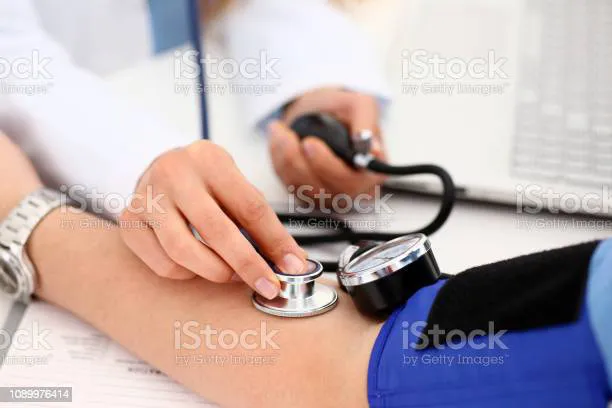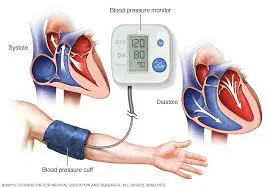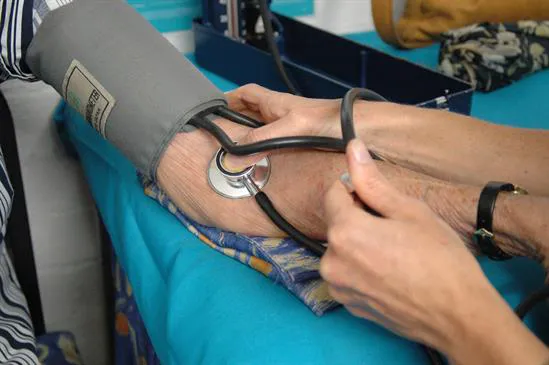Hello friends. How are we doing. It's a new week. Let's start with health topic. Hope you will love it.

https://www.istockphoto.com/photo/female-doctor-arms-make-medic-procedure-
INTRODUCTION
Hypertension, also known as high or raised blood pressure, is a condition in which the blood vessels have persistently raised pressure. Blood is carried from the heart to all parts of the body in the vessels. Each time the heart beats, it pumps blood into the vessels. Blood pressure is created by the force of blood pushing against the walls of blood vessels (arteries) as it is pumped by the heart. The higher the pressure, the harder the heart has to pump.
Individuas with systolic pressure > 140 and diastolic pressure > 90 are considered hypertensive. The incidence of hypertension increases with advancing age and is the most prevalent cardiovascular disease of older adults, making it a problem the gerontological nurse commonly encounters. Many older individuals have high blood pressure arising from the vasoconstriction associated with aging, which produces peripheral resistance.
Hyperthyroidism, parkinsonism, Paget’s disease, anemia, and thiamine deficiency can also be responsible for hypertension. Some providers take a conservative approach and will not prescribe treatment for hypertension unless the blood pressure exceeds 160 systolic and 90 diastolic.
Anxiety, stress, or activity before the blood pressure check should be noted, because these factors may be responsible for a temporary elevation. The anxiety of being examined by a physician or of preparing for and experiencing a visit with a health care provider frequently causes elevated blood pressure in a usually normotensive individual.

SYMPTOMS OF HYPERTENSION
Awakening with a dull headache
Impaired memory
Disorientation
Confusion
Epistaxis
Slow tremor may be symptoms of hypertension.
The presence of these symptoms with an elevated blood pressure reading usually warrants treatment.
MANAGEMENT OF HYPERTENSION

https://www.who.int/health-topics/hypertension/#tab=tab_1
Hypertensive patients are advised to rest
Reduce their sodium intake.
Regular blood pressure check.
If necessary, reduce their weight.
Aggressive antihypertensive therapy is discouraged for older persons because of
the risk of a sudden dangerous decrease in blood pressure.
Nurses should observe for signs indicating blood pressure that is too low to meet
the patient’s demands, such as dizziness, confusion, syncope, restlessness, and
drowsiness. An elevated blood urea nitrogen level may also be present. These signs should be observed for and communicated to the physician if they appear.
In management of the hypertensive person, it is a challenge to achieve a blood pressure level high enough to provide optimum circulation yet low enough to prevent serious related complications.
ANTIHYPERTENSIVE DRUGS
Thiazide diuretics are commonly prescribed, often for the initial treatment of
hypertension they are not without risks.
A major study of adults using thiazide diuretics found that one in twelve of them developed an adverse event, with the most common being hyponatremia, hypokalemia, and acute renal injury, and less than half had
laboratory tests performed to monitor for these adverse events.
This reinforces the importance of nurses reviewing patients’ histories to assure regular laboratory testing is being done to detect adverse consequences.
Other drugs that can be used to treat hypertension include betablockers,
calcium channel blockers, and angiotensin-converting enzyme (ACE) inhibitors.
NON – PHARMACOLOGIC MEASURES
Hypertensive people have a higher risk of adverse reactions from antihypertensive drugs, older patients should be assisted in using nonpharmacologic measures to reduce blood pressure whenever possible.
In fact, the American Heart Association (AHA) suggests the use of alternative approaches to
prescription drugs for mild hypertension. Fish oil supplements can reduce blood pressure in hypertensive individuals.
Higher whole grain intake was associated with a reduced risk of hypertension in middle-aged and older women, suggesting a potential role for increasing whole grain intake in the primary prevention of hypertension and its cardiovascular complications.
The DASH (Dietary Approaches to Stop Hypertension) diet has been recommended by the whole grains National Heart, Lung, and Blood Institute (2015) as being beneficial in reducing blood pressure. It is a diet rich in fruits, vegetables,, and low-fat dairy foods. Blood pressure has been found to decrease to a greater degree when daily sodium intake was reduced to 1,500 mg in combination with the DASH diet. The DASH diet has been viewed as having benefits for all persons, not only those with hypertension.
In conclusion, it is pertinent to say that regular BP checks is very important so as minimize the rate of impending deaths from high blood pressure.
Thank you my reader. Happy Sunday and do have a wonderful week ahead 🙌.
REFERENCE
https://www.who.int/news-room/fact-sheets/detail/hypertension
